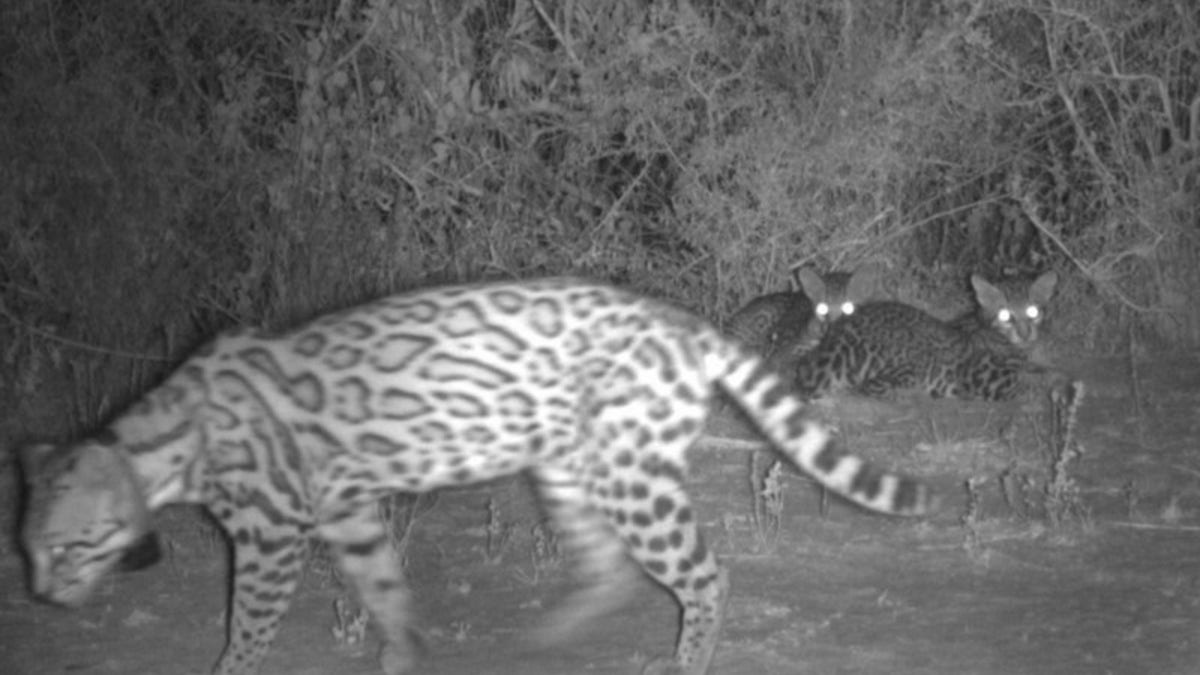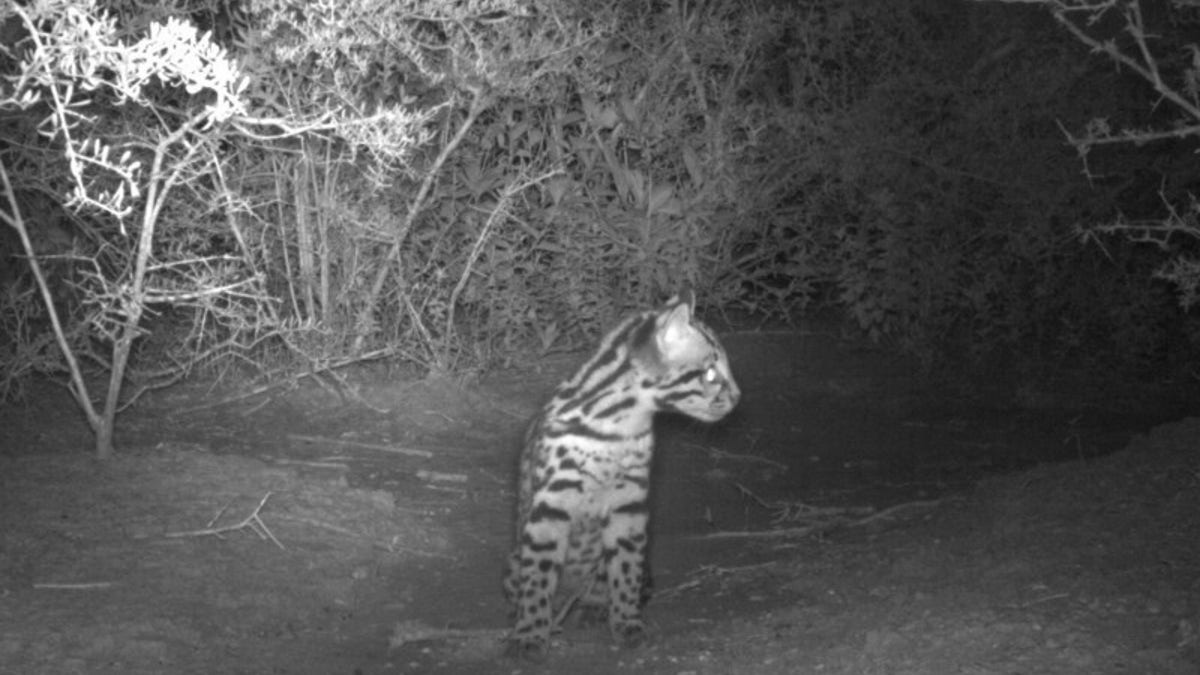
Mother ocelot and two kittens on Yturria Conservation Easement (USFWS).
For the first time in 20 years, wildlife biologists have discovered an ocelot den in Texas, raising hopes for the future of the endangered “little leopard.”
Ocelots, which stand 16-to-20 inches high and weigh between 20 and 35 pounds, once ranged from South Texas up into Arkansas and Louisiana. Today, there are only about 50 remaining in the U.S.
But recently, wildlife biologists using remote cameras to monitor seven female ocelots at the Laguna Atascosa National Wildlife Refuge in southeastern Texas photographed three of the cats being followed by kittens. One of the remaining four has not been seen with any offspring, and two are just now approaching the age when they can reproduce.
CHEETAH NUMBERS PLUMMET, FUELING EXTINCTION FEARS
But the seventh female provided the greatest discovery of all, leading the researchers to a den where they found an approximately 3-week-old male kitten that weighed less than a pound.

New ocelot kitten photographed by remote camera at Laguna Atascosa NWR (USFWS).
The newborn’s mother, estimated to be 11-years-old, was not at the den at the time. She returned soon after the biologists left.
“I suspect that the past couple of years of abundant rainfall have made excellent breeding conditions for these endangered wild cats,” said Hilary Swarts of the U.S. Fish and Wildlife Service. She is part of a team of wildlife biologists at Laguna Atacosa who track ocelots and collect data on their population numbers, health, habitat use, range and reproduction.
OLDEST KNOWN LIVING GORILLA IN US TURNS 60
She said the rain encouraged the growth of plants that are eaten by rodents, rabbits and birds that, in turn, are the diet of ocelots.
“With plenty of food and water, and minimal disturbance from humans, female ocelots have all the resources they need to reproduce successfully,” Swarts said.








































